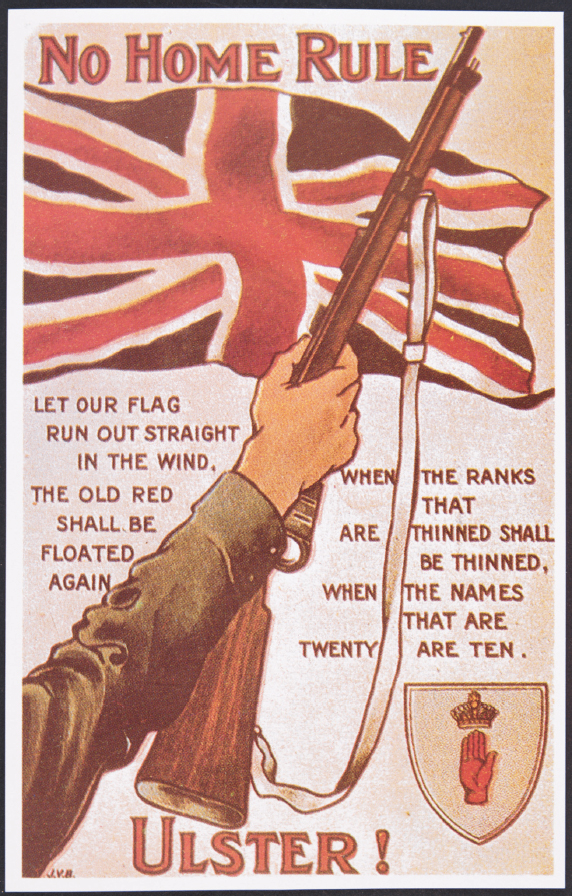What general domestic political trends emerged after 1871?

“No Home Rule”Posters like this one helped to incite pro-British, anti-Catholic sentiment in the northern Irish counties of Ulster before the First World War. The rifle raised defiantly and the accompanying rhyme are a thinly veiled threat of armed rebellion and civil war. (Photograph reproduced courtesy the Trustees of National Museums Northern Ireland. Photograph © Ulster Museum Belfast.)
TTHE DECADES AFTER 1870 brought dramatic change to the structures and ideas of European politics. Despite some major differences between countries, European domestic politics had a new common framework, the nation-state.
The common themes within that framework were the emergence of mass politics and growing popular loyalty toward the nation. Traditional elites hardly disappeared, but they were forced into new arrangements in order to exercise power, and a group of new, pragmatic politicians took leading roles. Powerful bureaucracies emerged to govern growing populations and manage modern economies, and the growth of the state spurred a growth in the social responsibilities of government. The new responsive national state offered its citizens a variety of benefits, and for good reason many ordinary people felt increasing loyalty to their governments and their nations.
Building popular support for strong nation-states had a less positive side. Conservative and moderate leaders both found that workers who voted socialist would rally around the flag in a diplomatic crisis or cheer when colonial interests seized a distant territory. Therefore, after 1871, governing elites frequently used antiliberal militarist and imperialist policies in attempts to unite national populations and overcome or mask intractable domestic conflicts. In the end, the manipulation of foreign policy to manage domestic issues inflamed the international tensions that erupted in the cataclysms of World War I and the Russian Revolution.
